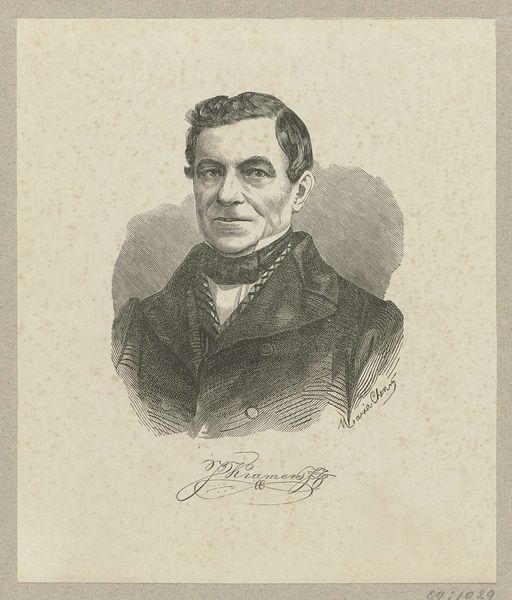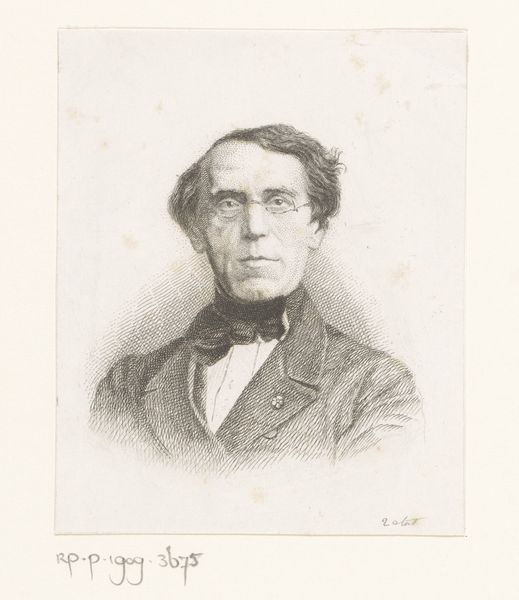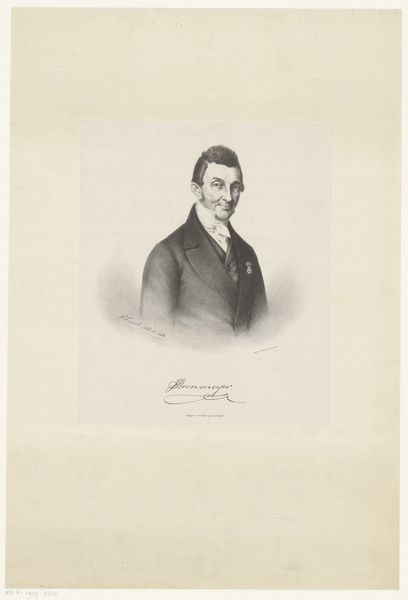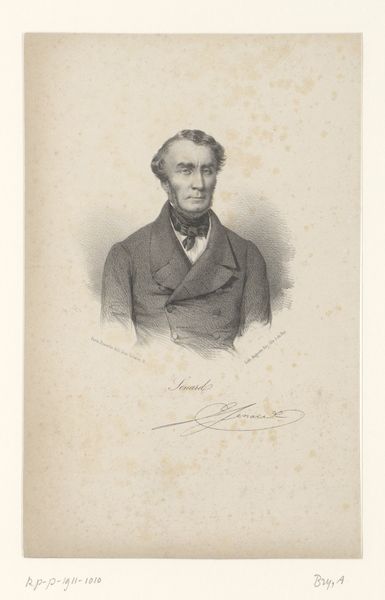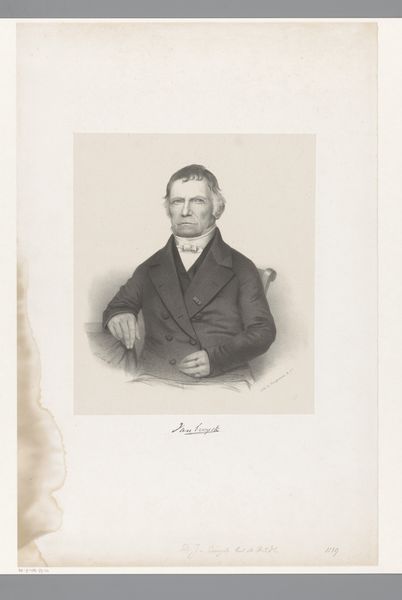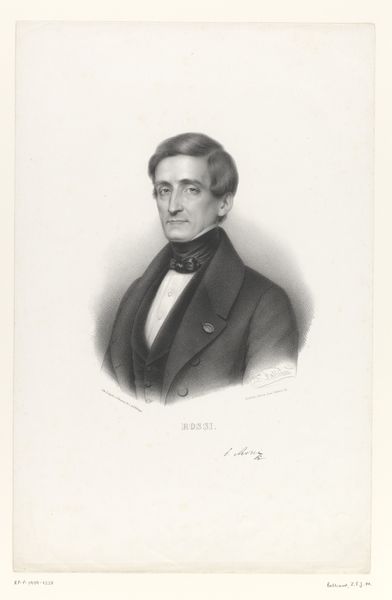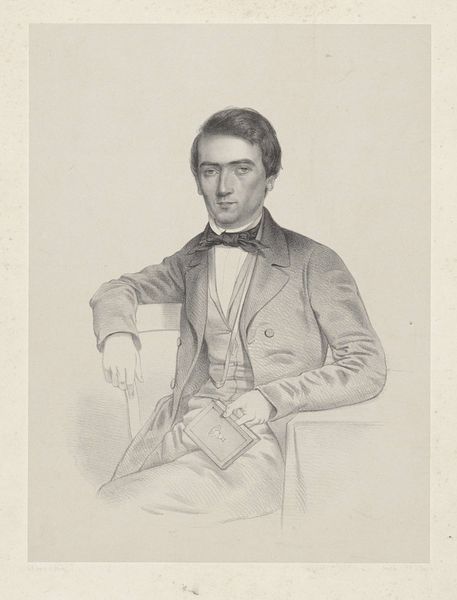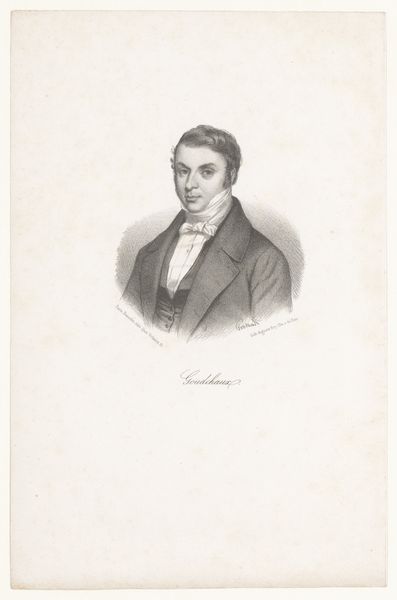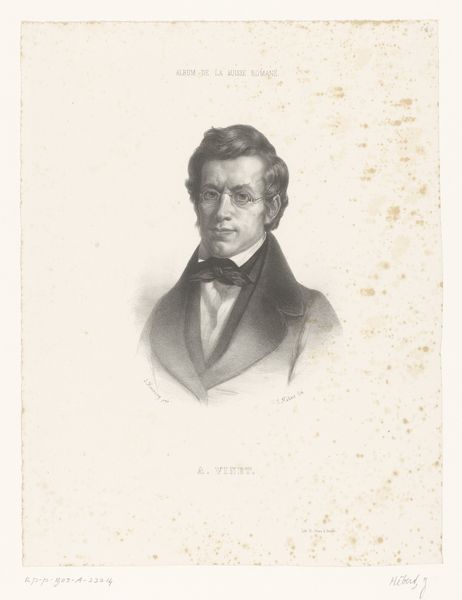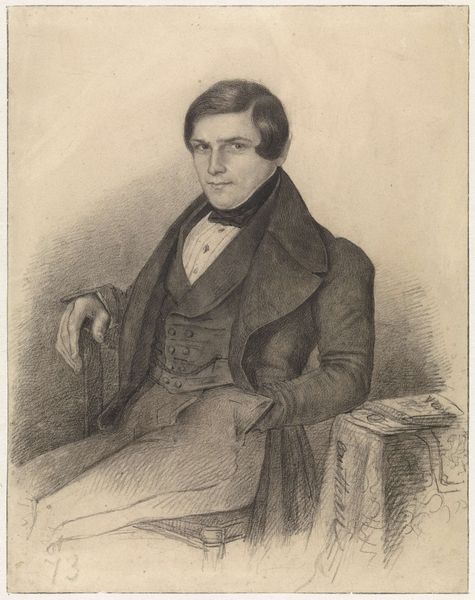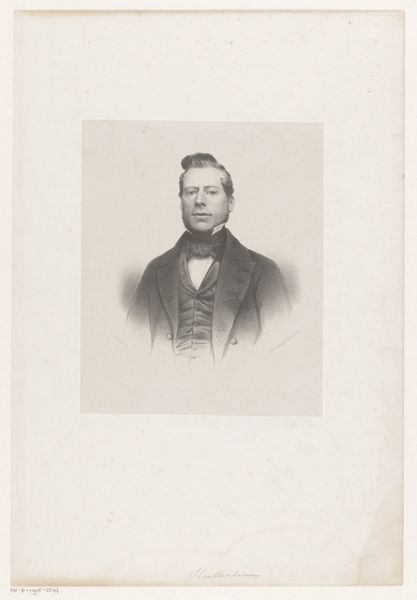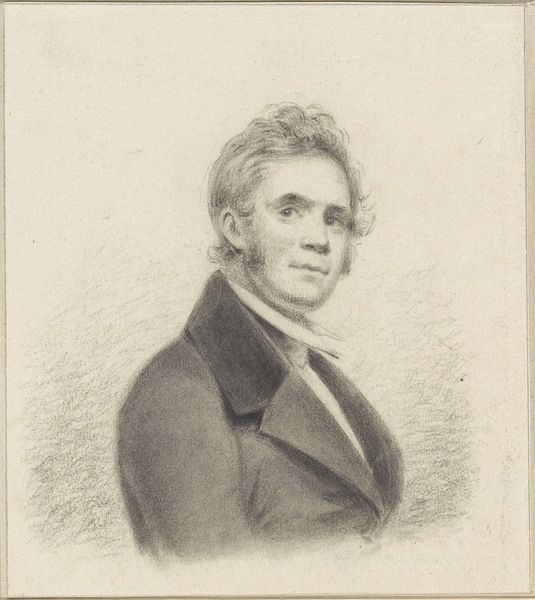
drawing, pencil, graphite
#
portrait
#
pencil drawn
#
drawing
#
amateur sketch
#
facial expression drawing
#
light pencil work
#
pencil sketch
#
portrait reference
#
idea generation sketch
#
pencil drawing
#
pencil
#
graphite
#
portrait drawing
#
pencil work
#
academic-art
Dimensions: height 167 mm, width 117 mm
Copyright: Rijks Museum: Open Domain
Editor: So, this is "Portret van de heer Poelman" from 1874, made with pencil, by Auguste Danse. It’s incredibly detailed, yet restrained. What's particularly interesting is how the artist uses simple graphite to create such texture. What strikes you about this drawing? Curator: What I see here is a study in the division of labor inherent in portraiture of this period. This wasn't just about capturing a likeness; it was about constructing an image of bourgeois respectability. Think about the sourcing of the graphite itself—the mines, the labor conditions. Then consider Danse, meticulously rendering each line. What social class does Poelman belong to? His suit suggests economic capital. It makes me wonder about the economic relationship between sitter and artist, client and commissioned labor. Editor: That's a very different angle than I was considering. So, you're saying that the materials and the process reveal class structures at the time? Curator: Precisely. The *act* of having one’s portrait rendered, especially with a material so associated with draftsmanship, signifies access, both for the artist and the subject. Who has time to sit, and who has time to draw? How do the clothes they wear in the drawing speak about a different form of labour, which is, the work of tailoring? Editor: That's fascinating. I was focused on the individual, Poelman, but you’re right, it's about the bigger economic and social picture, too, captured in the labor behind the art. Curator: And how that labor reproduces power dynamics in a very material way. Consider where the drawing might have hung. Not everyone could afford or even want to be rendered in such detail. Editor: This has totally changed how I see portraiture! I was so focused on the subject and the aesthetic, I didn’t think about the entire system of production. Curator: It's about recognizing that even the simplest drawing speaks volumes about the complex material conditions of its creation and consumption.
Comments
No comments
Be the first to comment and join the conversation on the ultimate creative platform.

